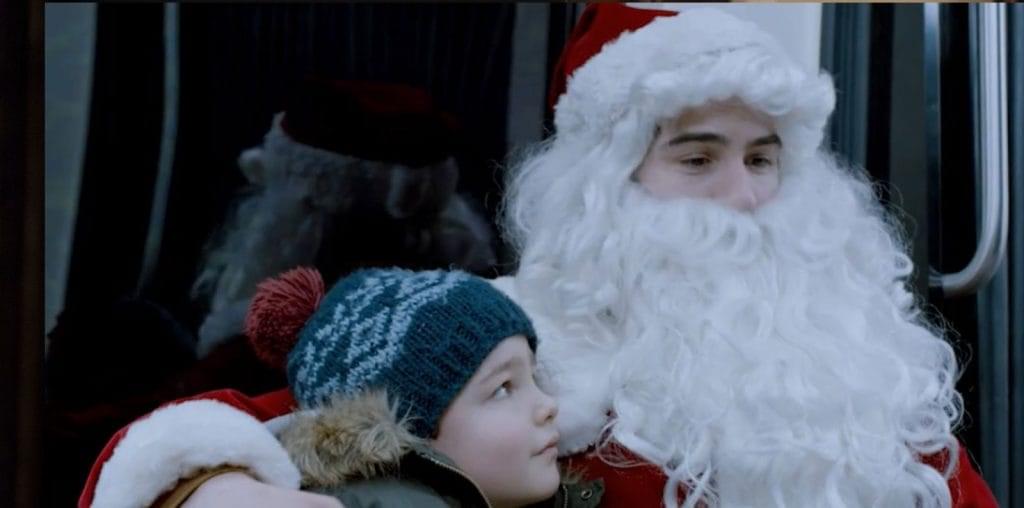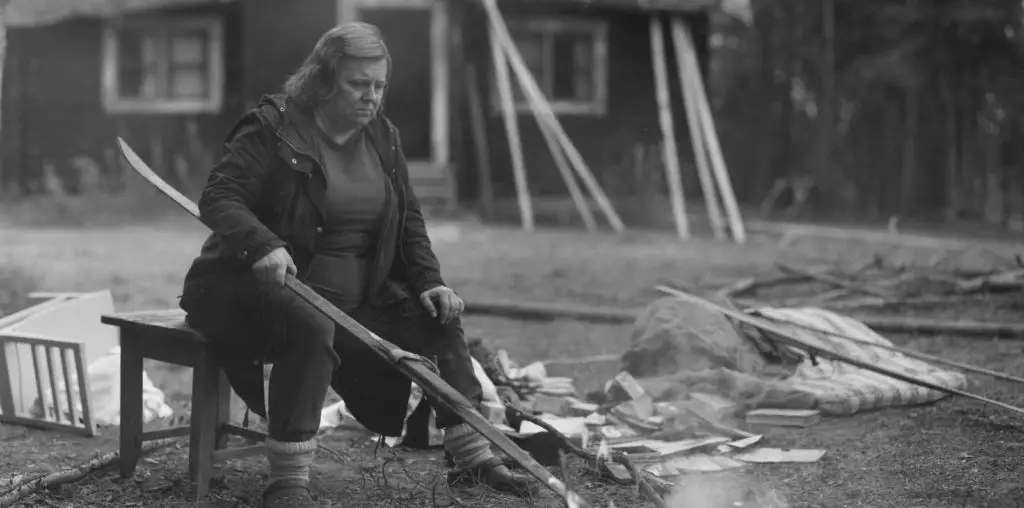
This short, evocative collage video is in two sections, both made largely from found footage. In the first section we see a close-up of a man, and we hear the line “I’m trying to make sense out of my past,” a line which is repeated throughout the section. A plaintive acoustic guitar loop contributes to the atmosphere of pensive regret. The imagery is made from loops of footage, seemingly from a feature film, in which a man with a gun threatens a woman in a stark, institutional hallway. (If I were a more pop-culture literate person, I might be able to immediately identify the film.) Snatches of dialogue, looped occasionally over the music, indicate that she wants to end their relationship while he is in the throes of a violent, overwhelming passion. The footage is distorted by the artifacts of highly compressed web video: blocky blotches of color and lurching movement, giving the video a feeling of a distorted memory or nightmare.
The second section (following a brief fade to black) begins with the same close-up image of the man, accompanied by loops of a monologue in which a man describes a state “exactly like death” in which there is no difference between day and night. The musical loop for this section is a deep, pulsing sound. The imagery, deep underwater diving shots in slow motion, is in murky tones of ochre, green and brown.
The overall impression the video gives is of a memory piece which recalls an overwhelming passion which led to a violent incident. Perhaps the trauma of this incident plunged the protagonist into a deeply submerged, hellish state of murky and indistinct suspension.
On first viewing, I was struck by the sheer emotive power and expressive force of this piece. Boughton is an expert collagist, combining found music, snatches of found dialogue, and loops of treated found footage into a form which creates a wholly new entity, a video poem with its own internal, emotional and musical logic, so strongly does the piece evoke the feeling of being locked into the eternally reverberating echoes of the past.
I then began to wonder about the aesthetic justification for his collage technique, specifically the way he uses footage from a commercial film, rather than writing and shooting his own material. (I won’t go into the legal and ethical questions of working with found footage, except to note that personally I find nothing wrong with it.) Usually, when I see an experimental film using found footage, the filmmaker is making a fairly obvious choice to use footage from mainstream films in order to make a pointed comment about our cultural relationship to Hollywood and to mass media and mass entertainment. But Boughton doesn’t seem to have such an intention here. He seems to simply be using the footage as raw material, to make a poetic but fairly straightforward expression of an extreme emotional state. (Of course, just as I managed to miss the specific pop-cultural reference itself, I may have missed his attempt at irony.)
Perhaps one could say that, since pop culture has a well-known ability to seep into and become part of the collective unconscious, images from Hollywood films are now equivalent to one’s own dream images, and are available like any other kind of raw material for the making of art.
In the end, a video like this is its own justification. The piece works. It creates an enthralling experience, absolutely convincing in its power and originality. If the art of the collagist is to rearrange the materials of experience, in order to create a new vision, then Boughton reveals himself here to be a collagist of singular sensitivity, subtlety, and skill.

